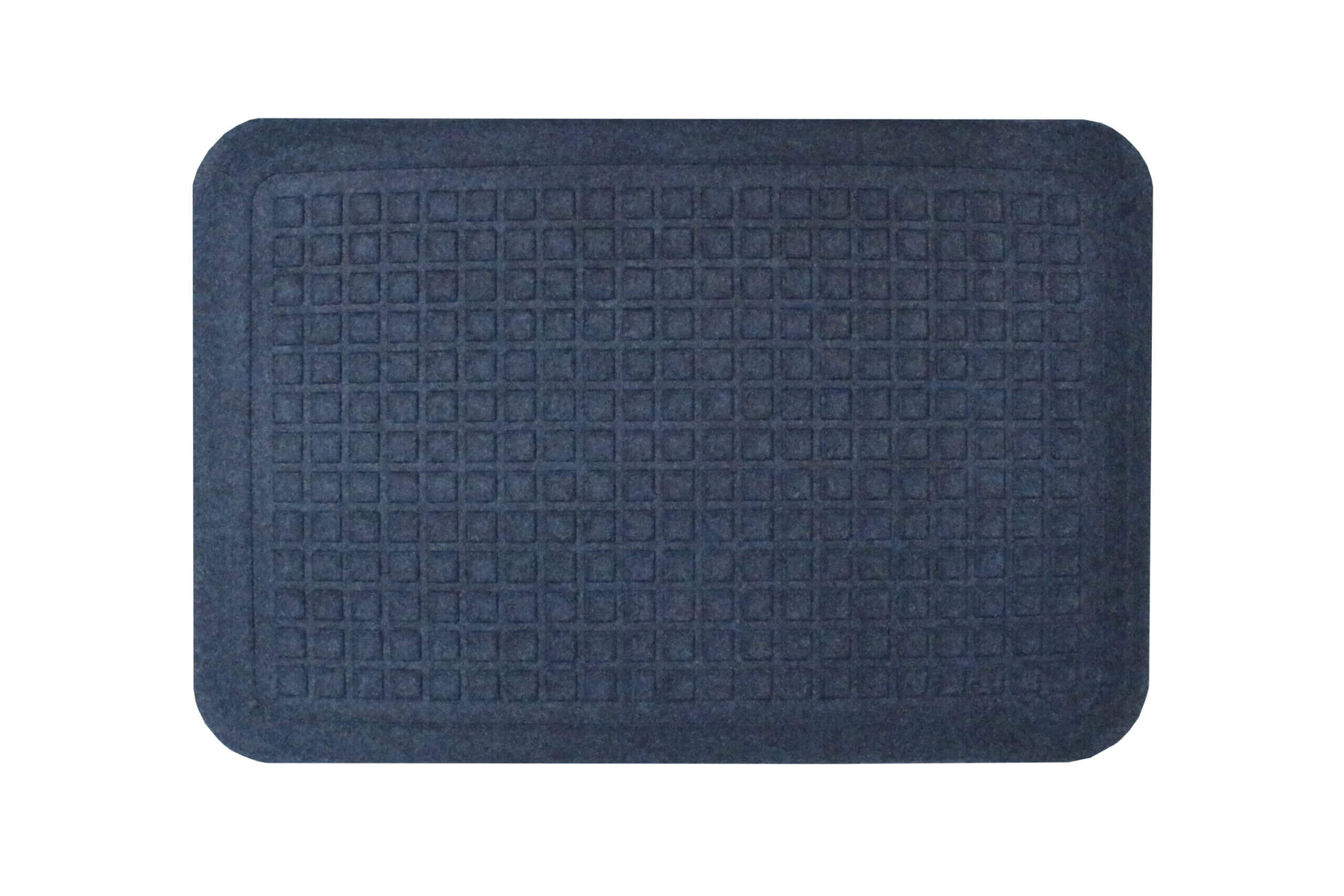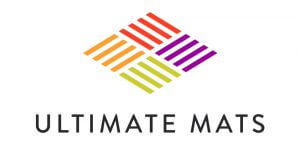
What Do I Look for in a Standing Desk Anti-Fatigue Mat?
If you’re tired of sitting at your desk all day, we definitely understand. Research shows that nearly 70% of us sit at a desk for our work, and yet the majority of us really hate it. Not only can sitting all day become tiresome and distracting, but it’s also not the healthiest way to spend our days.
Seated work can lead to all sorts of acute health issues. From low and mid back pain, neck strain, tension headaches, aching sit-bones, and swollen ankles, sitting all day is really taking its toll on us. Additionally, some seated workers experience even more severe issues. These can include an increased risk for obesity, higher blood pressure and blood sugar levels, and even circulatory issues.
With all these risks for seated workers, you may be wondering what you can possibly do to combat them while still remaining gainfully employed. At Ultimate Mats, we have a solution that won’t break the bank but will make you more comfortable and likely, more productive. But first, a little about ergonomics.
What Is Ergonomics?
Ergonomics is the study of a worker’s efficiency in their work environment. The best explanation of ergonomics is how an employer adapts a workspace to an employee, instead of adapting an employee to a workspace. When you use logic, adapting the employee to the workspace translates into quantifiable amounts of increased productivity from employees and decreased work-related injuries and worker’s compensation claims. As such, most every employer wants to make sure their employees are working in an ergonomically sound environment. In fact, even though OSHA does not mandate that an employer specifically provide ergonomically designed equipment to be used by their employees, they do saddle them with the obligation to provide them with a workspace free of hazard, and those hazards can and have been interpreted to be directly related to workspaces that are not ergonomically situated.
Even so, it is still the responsibility of the individual employee, in most cases, to create a workspace for themselves that is ergodriven and caters to their specific needs directly. For a seated employee, this can mean transitioning to an adjustable desk and using a standing, anti-fatigue mat.
What Causes Seated Workers to Experience Pain?
What exactly causes a seated worker to experience pain during their work day. If the employee is seated in a relaxed position, it would seem that they would be free of pain, especially pain that workers that stand on their feet all day experience. However, seated employees experience some of the exact same types of acute muscle pain, swelling, and aching. This is largely due to muscle rigidity.
The problem with sitting to perform your daily tasks is that, typically, you are seated in one position in your office chair, using one piece of equipment (likely a computer) for long periods of time. When you are seated in one position for lengthy amounts of time without breaks, your muscles become rigid. When muscles become rigid, they begin to constrict the surrounding blood vessels, causing a decrease in circulation. This results in swelling in the lower extremities and pain in the back, shoulders, and neck. As such, it is important that a seated employee follow certain steps to avoid experiencing muscle rigidity. Here are a few tips a seated employee can use to avoid muscle rigidity:
Take adequate breaks. It is important as a seated employee that you take adequate breaks during your seated work day. During these breaks, you should stand and walk around if you can to get your blood circulation flowing. If you cannot leave your desk, simple stretching and moving around can prevent muscle rigidity from occurring. You may want to learn some massage points so that you can treat problem areas as they develop.
Stay hydrated. To avoid swelling in the legs, ankles, and feet, it’s important to drink plenty of water. This may seem counterintuitive to avoiding water retention, but drinking plenty of water actually helps keep fluid moving through your body efficiently. While it can be tempted for seated employees to drink cup after cup of coffee to survive working long hours, it’s much better to opt for plain water.
Wear proper footwear and legwear. If you are really beginning to experience problems (such as circulatory issues or major swelling) from your seated work, you can opt for compression socks and orthopedic footwear to help decrease the effects of sitting for more than five hours per day.
How to Use a Standing Desk Anti-Fatigue Mat
One of the best ways to reduce the acute effects of seated work is by using an adjustable standing desk along with a standing mat. An adjustable standing desk is a desk that can be used while seated and also when standing. It adjusts up and down so that the height accommodates both seated and standing desk users. This is a great way for a seated employee to keep moving and avoid muscle rigidity. You can even sit on something fun like a massage ball that can help keep you moving.
When used in the standing position, however, it is important that the employee also use a comfort mat beneath their feet. A comfort mat or anti-fatigue mat is a thick, typically rubber floor mat that allows the standing employee to place their feet on a padded surface instead of the hard floor.
An anti-fatigue floor mat is especially beneficial for standing workers. Standing workers also experience muscle rigidity when standing to perform their tasks. Seated workers who choose to stand occasionally can also be at high risk for this condition as well. An anti-fatigue standing mat works by causing a slight, unnoticeable amount of instability under the feet of the standing worker. This instability forces the worker to make micro-adjustments to maintain balance. In other words, the muscles in the feet, ankles, calves, and quadriceps are constantly moving and ensure that the standing worker is stable. As such, muscle rigidity is impossible because the muscles are continually moving rather than remaining still on a regular flat mat.
Seated workers can also benefit from an increased caloric burn by using an anti-fatigue standing desk mat while they work. When a seated worker transitions to a standing position to work, they are constantly moving and ensure that the standing effectively burns more calories and experiences more body conditioning than they do when they sit to work. This can be a real selling factor for an employee looking for ways to increase their physical fitness level or burn a few extra calories a day. As such, standing desk anti-fatigue mats have also been dubbed “stay-fit” or “get-fit” mats.
What do Look for in a Standing Desk Anti-Fatigue Mat
Not all mats are created equally, so it’s important to make sure you select a mat that accommodates your needs perfectly. Ultimate Mats knows the ins and outs of the anti-fatigue matting industry and we’ve done our homework so you don’t have to. Here are six things to look for when selecting a standing desk anti-fatigue mat:
1: Appropriate thickness. Anti-fatigue mats are available in varying thicknesses. However, the thickest mat doesn’t equate to the best mat. Thicker mats don’t mean you’ll experience less foot pain or burn more calories while standing. Thicker comfortable mats are made with thicker cushioning to accommodate employees who stand with heavy equipment on (like heavy shop aprons, welding helmets, steel-toed boots, etc.).e calories a day. You will likely not need that much support if you are simply standing behind a computer. As such, look for a mat that measures around 5/8”.
2: Material. A standing desk anti-fatigue mat should be made from a high-quality material that resists crushing and can accommodate your standing position without depressing too quickly. You can find different materials like polyurethane or nitrile rubber. The best anti-fatigue mats are made with a closed-cell nitrile blend. This blend of material resists decompression and delivers consistent support without needing constant replacement.
3: Beveled edges. The edges of your anti-fatigue mat should always be beveled to eliminate the possibility of tripping or stubbing as you enter onto and off of the mat. A beveled edge slowly curves downward until it reaches the edge of the floor, ensuring you are safe from tripping if you forget the mat is there.
4: Easy clean, polypropylene upper. The best type of anti-fatigue mats will have a sturdy, and easily cleaned polypropylene or phthalate upper. These types of finishes resist stains and spills and are easily cleaned with a light cleaning solution and a damp rag.
5: Rubber backing. It’s important to make sure the backing of your anti-fatigue mat is sturdy, mildew and mold resistant, and non-slip on any floor. An anti-fatigue mat that moves and slides around can cause a hazard which completely diminishes its effectiveness.
6: Style. Style is just as important for the discriminating worker as the functionality of an anti-fatigue mat. Select the best standing desk mat in a color that appeals to you and matches your workspace décor. Quality mats are available in numerous color options so there are plenty of options when choosing your mat.
Using a standing desk anti-fatigue mat can alleviate the aches and pains some seated workers experience. Standing for periods of time during your day can help increase muscle movement and prevent muscle rigidity, a condition that can result in circulatory issues and even put a worker at higher risk for cardiovascular disease. Standing anti-fatigue desk mats create a safe balance board-like surface for workers to stand upon while performing their tasks. These commercial-grade active mats create a slightly unstable surface that causes muscles to make micro-adjustments, which results in continual movement. Anti-fatigue mats are a great way to burn additional calories in the workday of the seated worker.
